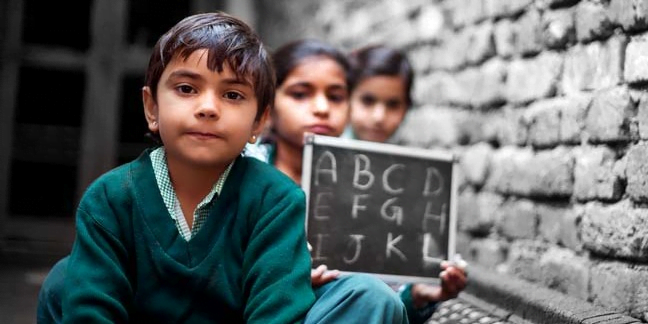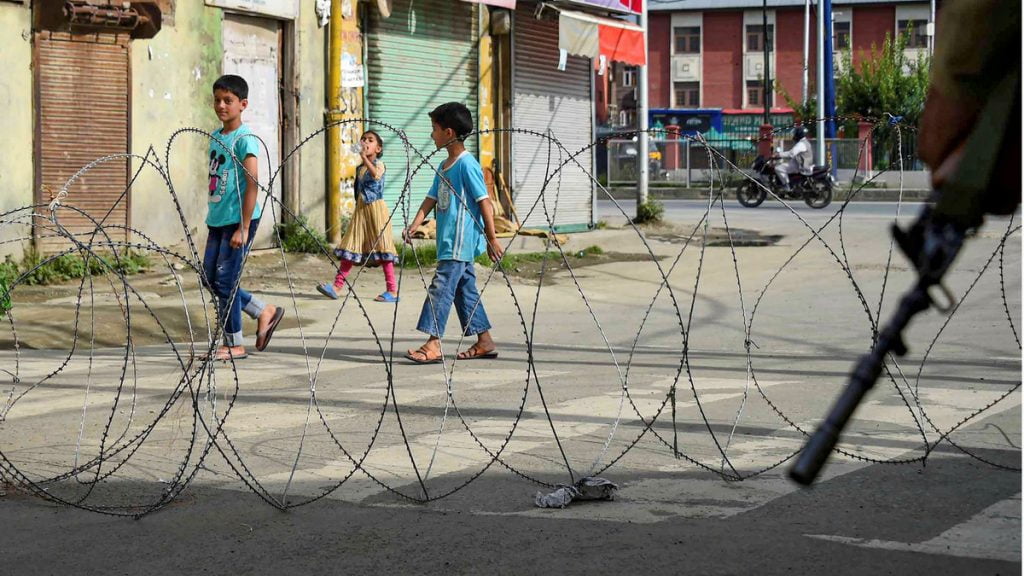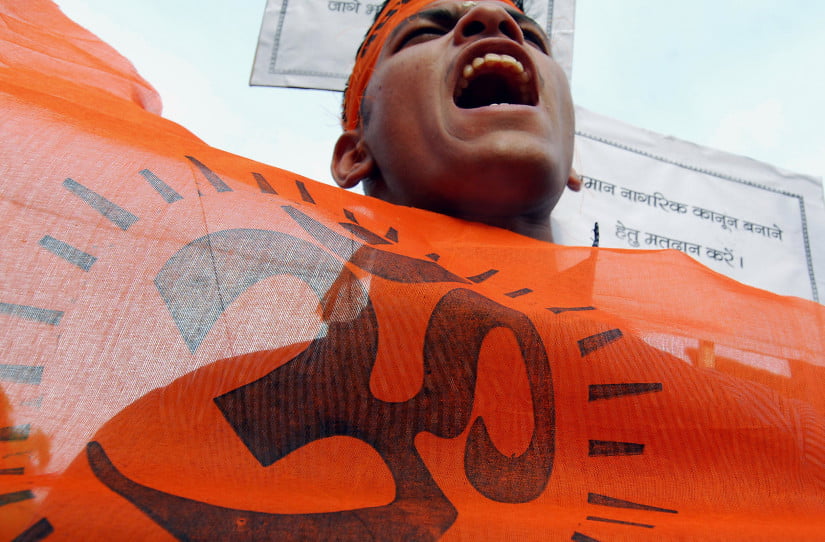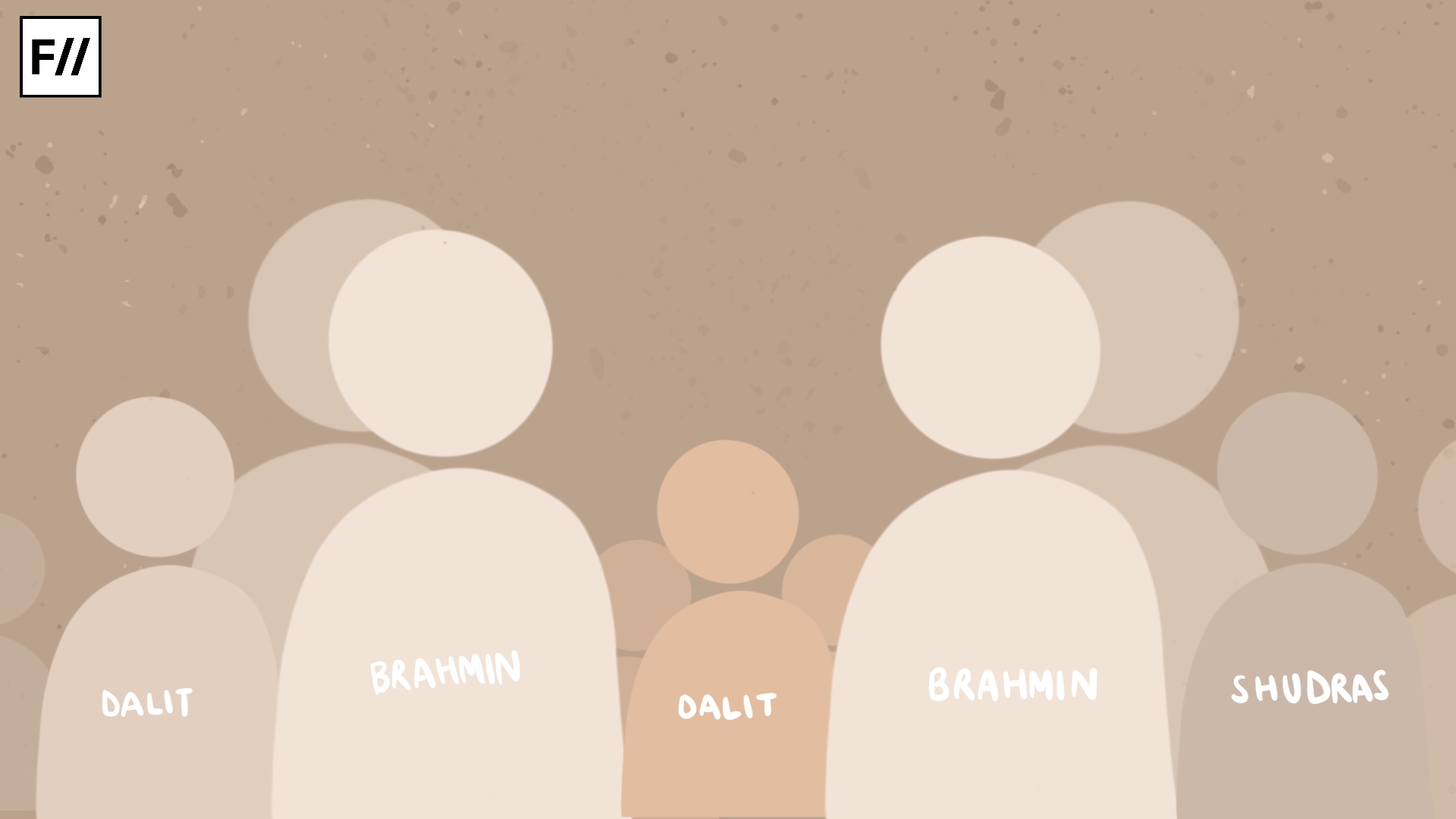India has had a fraught history with education. With great scholarship on a wide variety of subjects, the act of learning was available to only select upper castes in ancient India. In the absence of a standardised system of education, different religions had different institutions for imparting knowledge (madrasas, ashrams, gurukuls, Buddhist monasteries etc). While in the Vedic period, some women from upper caste had access to education, most women were denied this right. Sometimes, cities developed as centres of learning, as in the case of Taxila and Benaras during the Gupta period.
In principle, it is the job of a democratic nation to ensure rights and safeguards to its citizens. Essentially then, any institution of education should be a safe space, where knowledge is available to all, and where healthy debates triumph over polarised, hateful opinions.
India’s Struggle With Education
It was only with the advent of the British that some form of common structure began developing in educational institutions. Universities and colleges were established as per the requirements of the British, and missionary schools began growing in number, because they were ‘thought’ to be more egalitarian. University of Calcutta, University of Allahabad, University of Delhi, University of Bombay were all established in the late 19th century. At the same time, institutions like Aligarh Muslim University were also established to encourage learning rooted in Indian traditions instead of western knowledge that was imparted in the universities set up by the British.
These institutions received criticism for catering to the upper-class upper-caste masses who would fulfill the administrative needs of the British. Some were lauded for encouraging women’s education. Yet other critics pointed out the village schooling had existed prior to the British, and had hence been eradicated. In the midst of this, the battle for Dalit education raged on even after independence, where caste based prejudice either ensured that they never received an education, or were heavily discriminated against and denied basic rights.

While education in India has in no way become egalitarian, with caste, gender and religion based discrimination still pretty evident, the right to free and compulsory primary education for children in the 6-14 age-groups is a fundamental right. Discrimination on the basis of caste, creed, religion, gender etc. is a crime and affirmative action for those who have been oppressed is guaranteed by the constitution in forms of reservation in higher education and government jobs.
In principle, it is the job of a democratic nation to ensure rights and safeguards to its citizens. Essentially then, any institution of education should be a safe space, where knowledge is available to all, and where healthy debates triumph over polarised, hateful opinions. However, education under the BJP, especially since its re-election, tells a different story.
Where Is Democracy?
During the elections last year, the Central Board of Secondary Education or CBSE dropped three key main chapters from the Class 10 Political Science text book. The three chapters included ‘Challenges to Democracy’, ‘Democracy and Diversity’ and ‘Popular Struggle and Movements’. It was unclear why such a move was made but students were no longer to be tested in the final exams in the final exams.
It is then interesting to question why chapters that could complicate, multiply and deepen the understanding of democracy in the times of BJP, which is hell bent on creating a Hindu Rashtra.
Given how the social sciences are meant to induce a spirit of critical thinking, it is interesting why these chapters were in a sense made ‘optional’. Before the Pulwama attacks, the dissatisfaction with the government had been strong; demonetisation had wreaked havoc in the unorganised sector; farmers were agitating for better security and violence against minorities were on the rise. By definition, citizens of a nation have primary importance. Given the diverse fabric of India, it is but natural for people to raise their voices against policies when they find it discriminatory, or to demand what they feel denied of.
By rendering such chapters optional, both teachers and children may begin to believe that such chapters are not important. It is then interesting to question why chapters that could complicate, multiply and deepen the understanding of democracy in the times of BJP, which is hell bent on creating a Hindu Rashtra.
Have You Been Indoctrinated?
In fact, this selective learning is only a part of the propaganda. In an article, Teaching to Hate: The RSS’s Pedagogical Program, Nandini Sundar highlights how RSS has been using education as a tool to instill hate. It’s initiatives like Vidya Bharati and Vanvasi Kalyan Ashram which caters to the educational and living needs of lower castes and adivasis have been creating the ideas of the ‘nation’ as belonging to dominant groups of society. Their curriculum also include an emphasis on learning Sanskrit and sanskar or good behaviour.

Even the DAV schools and colleges, which began as institutions that tried to balance Vedic learning with castigating social evils, have now begun to espouse a ‘Hindu’ identity. While Arya Samaj had for long focused on the spirituality of a human being rather than engaging with different rituals and customs, things have changed, especially since BJP’s victory in the 2014 elections. More and more Arya Samajis have begun identifying with the RSS’s ideologies, finding complete confluence in gau raksha or cow protection, especially in North India.
Such emphasis on a ‘moral’ learning ensures that students develop a notion of purity and dominance, whereby they are convinced that it is their birth right to have access to more privileges than the minorities. By focusing on lower castes and adivasis, the idea of being a ‘Hindu’ becomes important, relegating caste-based discrimination to the back. It is not surprising then that such education modules can lead to an inflated sense of patriotism, and any dissent against this notion is understood to be ‘anti-national’, a term BJP has used liberally for whoever raises their voices against them.
Segregation Is A Reality
The constant narrative of everything being ‘normal’ in Kashmir has become so engraved that we no longer ask questions about what it means for children to grow up knowing nothing but violence? If children can’t even step out of their homes, where then do they go to learn?
Being Hindu has become the most primary identity; anybody not Hindu automatically becomes an enemy of the state who should be sent away from this country. In the aftermath of the Gujarat riots in 2002, many school principals urged Muslims to take their children out of schools in Hindu dominated areas because they didn’t have the security to protect them in case violence broke out. Now, almost 18 years after the riots, schools have become so segregated that that it has become the norm. Even private-run Hindu schools are hesitant to admit Muslim students. In fact, this discrimination against the Muslims has become so inherent and widespread that they have to make do by living in second-rate conditions, in all spheres of life.
Since the abrogation of Article 370, where the state of Jammu and Kashmir had been stripped down to union territories, schools and colleges were shut for more than six months. Violence and conflict has mired the land of Kashmir since Independence. With no access to internet, closure of schools and a lack of safety, has BJP even made schools and colleges conducive to learning? The constant narrative of everything being ‘normal’ in Kashmir has become so engraved that we no longer ask questions about what it means for children to grow up knowing nothing but violence. If children can’t even step out of their homes, where then do they go to learn? It is not surprising that the region of Kashmir is a Muslim dominated area.

Education systems should nurture and encourage students, allowing them to have a safe space to develop and express their opinions. Instead, not only is religion based discrimination common, caste and gender based discrimination in educational institutions still continue to persist vehemently. In fact, the RSS ideology is so mired in the primacy of the upper caste, that anyone else is simply considered a sub-class citizen. A report released by the National Campaign on Dalit Human Rights in 2017, highlighted how children from lower castes are still made to sit and eat separately, and even bear the brunt of violence when punishments are given out.
Increasingly then, schools are becoming more and more non conducive to learning, perpetrating all forms of prejudices and discrimination.
Also read: Exclusion In Education: Whose Campus Is It Anyway?
Anti-CAA Protests And Safety In Our Educational Spaces
The polarisation between who is patriotic and who is an anti-national has never been clearer than in the protests against the Citizenship Amendment Act (CAA) which gives citizenship to everyone but Muslims who entered India from Pakistan, Bangladesh or Afghanistan before 31st December, 2014. What has followed is a crackdown on dissent, with many being detained, many languishing in jails, and many more charged with sedition.
A private school in Gujarat forced its students to praise the new citizenship law along with the Prime Minister. In Karnataka, when an anti-CAA play was staged by a student, the mother of the student and the principal were arrested. In Uttar Pradesh, teachers and students were suspended, expelled or arrested for raising their voices against the CAA.
The worst affected, however, were students from Jamia Millia Islamia and Aligarh Muslim University. Students have been beaten up, shot at, and forced to vacate the hostels. Their rooms have been burnt and they have been searched for and attacked by the police.
There have been repeated efforts to curb dissent. In IIT Kanpur, singing Hum Dekhenge, a poem by Faiz was found to be unsuitable and inappropriate in the current scenario. In a letter to the Prime Minister, students from the Srishti Institute of Art, Design and Technology alleged that a group of politically charged individuals heckled them, commenting on their clothes and threatening them with violence. The gang came in and defaced a graffiti the students had made in protest, by painting it over in saffron.
The worst affected, however, were students from Jamia Millia Islamia and Aligarh Muslim University. Students have been beaten up, shot at, and forced to vacate the hostels. Their rooms have been burnt and they have been searched for and attacked by the police. In JNU, an ABVP mob, the student wing of BJP, entered hostels and violently beat up students. In the riots in Northeast Delhi, a Muslim majority area, schools were burned down; even the school supplies were destroyed. The situation was so tenuous and charged that the board exams had to be postponed.
With unemployment rates at an all-time high after four decades, it is a matter of concern as to what social security are the youth of India really getting. The rampant violence has only made matters worse, and it is worth questioning what it means for students to not have a physically safe space for receiving an education. Added to this is the already pre-existing problem of the terrible state of government schools in India.
Also read: Violence Unleashed In JNU And Its Larger Implication
In the light of increasing discrimination, prejudices and violence, it is worth asking who will really get to go to school, and what kind of education they will receive. Not only are problems in education being addressed, more and more are being created. How willing will parents from minority communities be to encourage their children to get a better education? And what does this lack of safety in educational institutions mean for girls?
Featured Image Source: The Hindu Chronicle
About the author(s)
Suyashi Smridhi is an aspiring writer and journalist from Patna. Her work has appeared on platforms like sbcltr.in, Coldnoon- International Journal of Travel Writing and Travelling Cultures amongst others. She is an alumnus of the Summer Institute, University of Iowa, a two-week creative writing cum cultural exchange program between India, Pakistan and the US.




